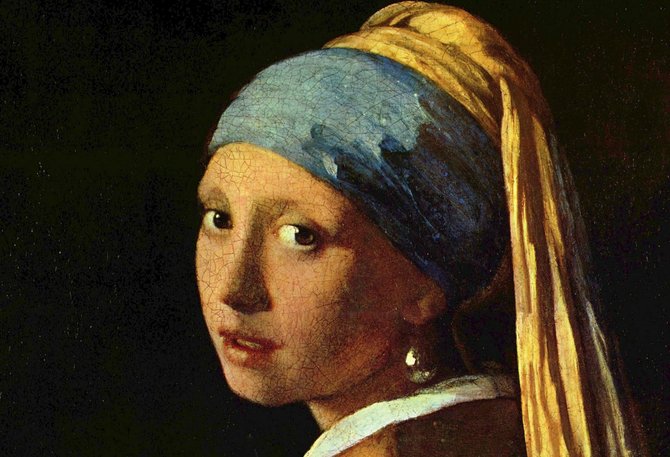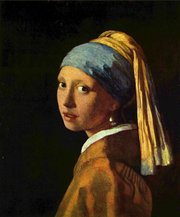In the 20-plus years since I was an art student thumbing the dense pages of "Janson's History of Art," textbook educational tools have changed dramatically. Computer science has intervened, enhancing both the learning experience and what can be learned. Technology has revealed the field of art, artwork an its history, similar to the drops used to dilate the pupil for a closer look inside the eye. Through analysis and theory, we can deconstruct the linear narrative of art's development.
This art-technology interface has expanded the study of painting in particular, shifting analysis from symbolic to forensic. Using X-ray, ultraviolet light and high-powered microscopes, art researchers can reveal the miniature terrain created by layers of pigment, oil and brushstroke. They have revealed the painter's hand at work, along with the boars' hairs left by an overused paintbrush or the dust adhered to a long-drying canvas. "Jansen's History of Art" textbook has seen considerable upgrades. The latest edition includes ebooks, digital imagery and interactive labs.
As windows open on the scientific front, long-established museums and galleries work to keep pace. Museums with pioneering spirits, such as the National Gallery in London, have embraced the brave new world and, as a result, are reaching new audiences through the medium of high-definition cinematography and satellite broadcasting. Collaborating with documentary filmmaker Phil Grabsky and live digital-cinema provider By Experience, London's National Gallery is virtually opening its doors to viewers from around the globe.
As Grabsky explains in a video press release, his high-definition documentaries give viewers the opportunity to view recent art exhibitions with expert commentary, artist biography and an insider look at the curatorial process without traveling to a foreign country. Much like a digital art-history class, the audience learns about the life and times of the artist, as well as the artist's techniques, materials and creative idiosyncrasies. In the last three years, Grabsky has produced four exhibition documentaries, including "Leonardo Live," "Manet, Portraying Life," and "Munch 150," and his newest film, "Vermeer and Music: The Art of Love and Leisure." During the satellite broadcasts, people from up to 30 countries can simultaneously watch the same film about the same artist.
"Vermeer and Music: The Art of Love and Leisure" premieres this month. The Vermeer exhibition at the National Gallery, London, includes three of Vermeer's 36 known paintings, two belonging to the gallery's permanent collection and one on loan for the exhibit. As the title suggests, the theme of the exhibit is music and the role it played in Dutch 17th-century life. Original and high-quality reproductions of the instruments depicted in the painting—virginals (a smaller version of a harpsichord), harpsichords, lutes and oboes—are also on display.
Johannes Vermeer (1632-1675) was the son of a tavern owner. He lived his 43 years in Delft, Netherlands. Vermeer's paintings, a third of which include instruments, are a testament to the presence of music in everyday life from the tavern to the parlor.
Unlike 17th-century Italy and France, where music was generally limited to the church and the aristocracy, the Netherlands had a more egalitarian society, and music—as seen through the eyes of painters like Vermeer, Jan Steen and Pieter de Hooch—was at the heart of it.
The Exhibition On Screen event, "Vermeer and Music: The Art of Love and Leisure" will be at the Cinemark Tinseltown movie theater (411 Riverwind Drive, Pearl, 601-936-5856 ) Oct. 10 at 7:30 p.m. Tickets are $11.50, $10.50 for seniors and students, $9.50 for children. For more information, go to exhibitiononscreen.com.




Comments
Use the comment form below to begin a discussion about this content.